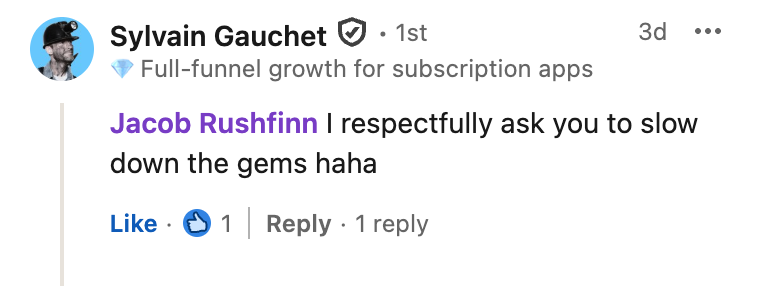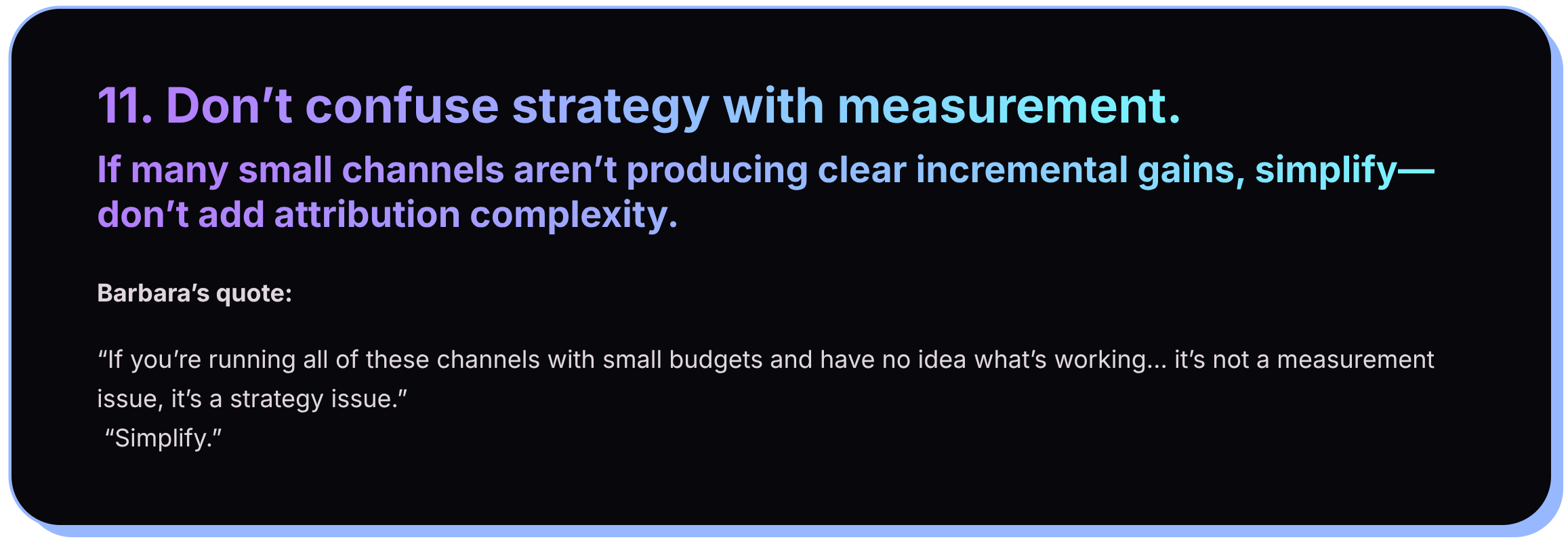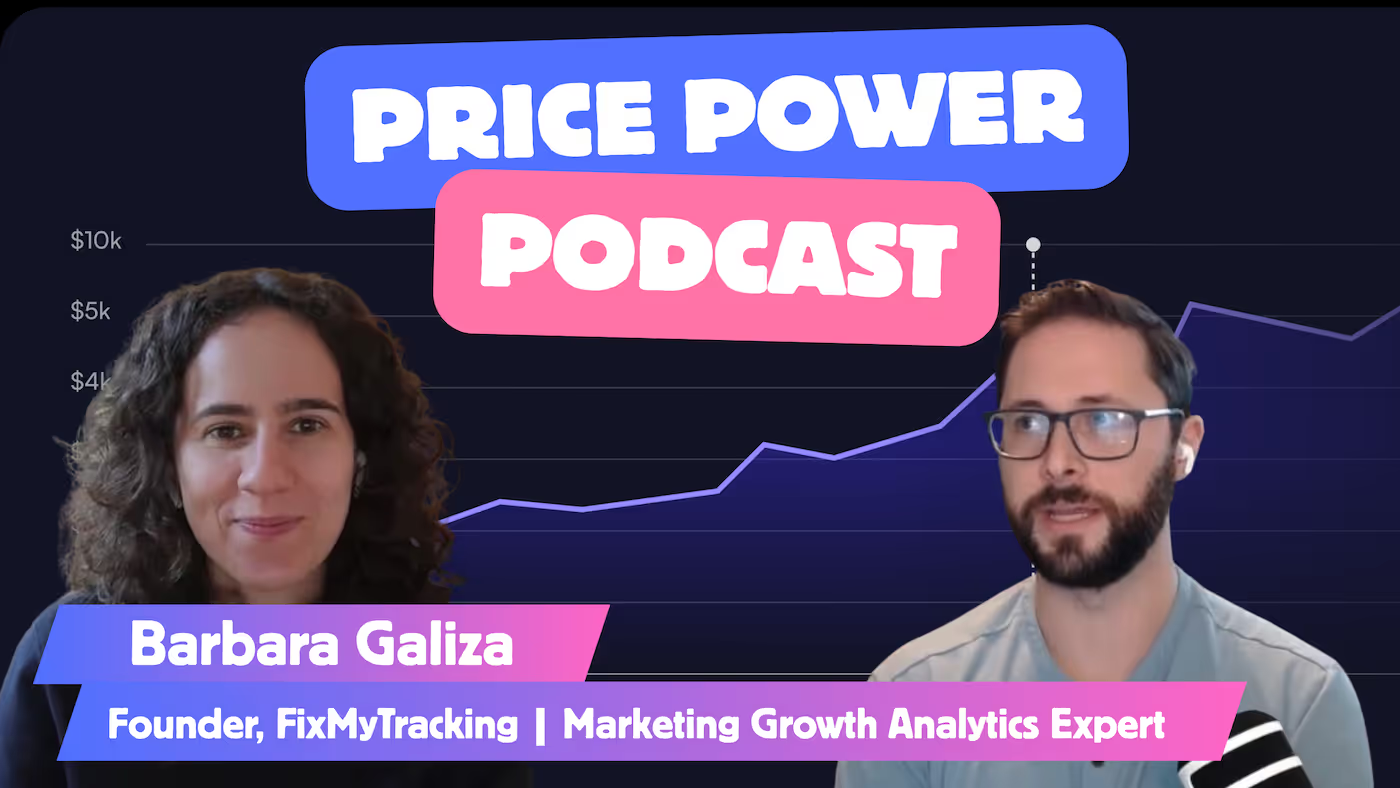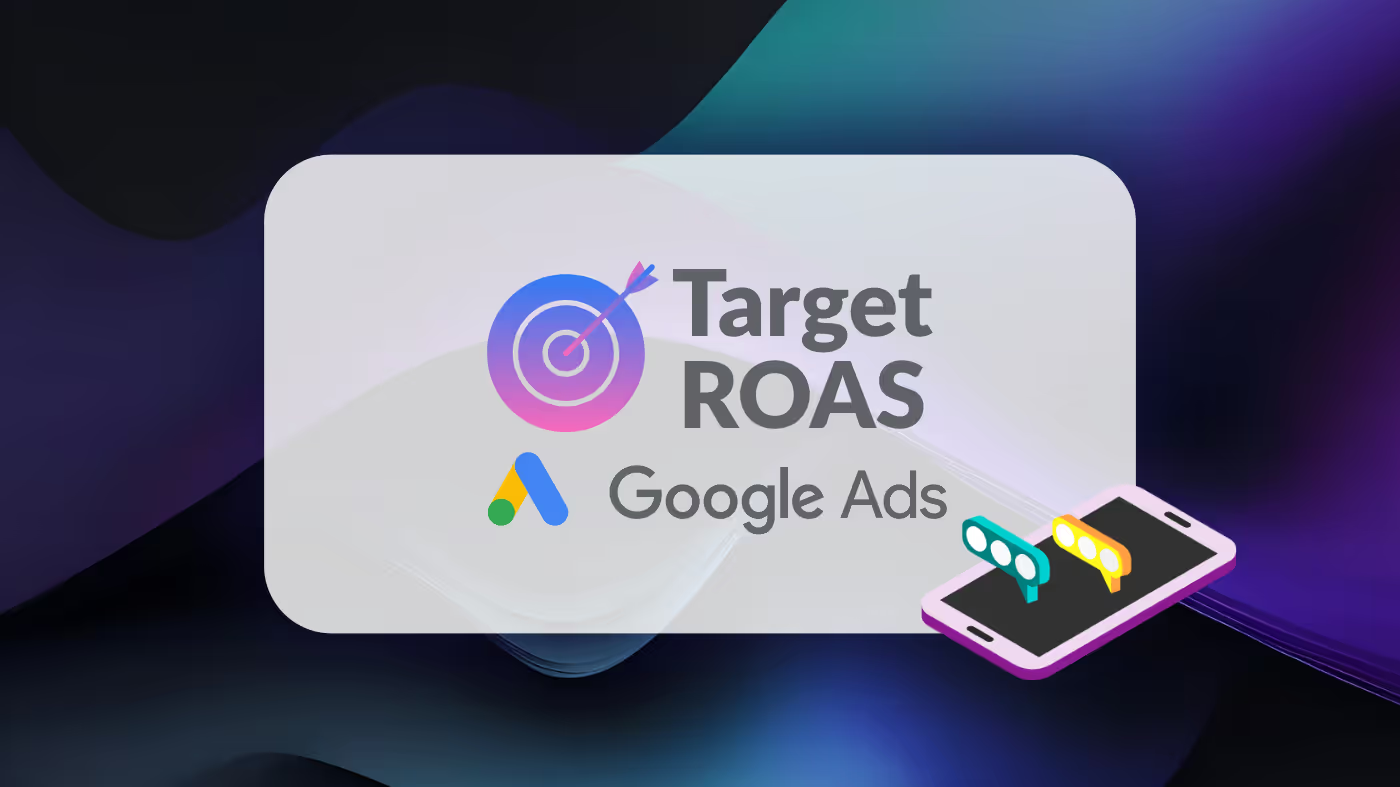Price Power Podcast
Episode 5: Barbara Galiza: 5 Golden Rules for Conversion Events

Barbara Galiza (HER, Microsoft, WeTransfer, Mollie) breaks down how subscription apps should structure conversion events, clean up broken tracking, and send the right signals into Meta and Google to improve ROAS. She shares her five golden rules for event design, why most apps send way too many signals, and how speed, value, and PII massively improve match rates. We also cover predictive value (without overbuilding LTV models), why strategy failures masquerade as measurement problems, and how fast event sending boosts attribution quality across platforms.
It was my pleasure to have Barbara on the podcast. When I shared that we were releasing an episode with Barbara we got some pretty awesome responses:



Since this episode was packed full of knowledge, I wanted to pull out some of these insights for you.
Here are 11 tips I think are great:

Why it matters:
Barbara notes that teams think event volume helps, but in practice it slows marketing and creates internal distrust in the data. Three key events are usually enough for ad platform optimization:
- Top-funnel event (e.g., survey complete)
- Signup/registration (first PII touchpoint)
- Trial start (strongest early proxy for value)
This keeps signal clean and maintenance manageable, especially on Meta/Google.

Context:
Early events (survey → signup → trial) show escalating intent.
Signup is the first place you get PII, which directly improves match rates.
Trial start is the earliest reliable revenue-aligned event that still fires within attribution windows.
She recommends using these three because they balance early intent + attribution feasibility + simplicity.

Context:
In a post-IDFA world, ad platforms rely heavily on probabilistic matching. Every minute between click → app store → install → open introduces identity drift or device/browser hops.
Fast events increase match rate and reduce wasted spend.

Context:
A client SDK event is fastest → better attribution.
A server event comes later with:
- predicted value
- trial filtering
- richer user traits
- PII (if allowed)
This “dual event” pattern is common in high-performing teams.
I found this one super interesting. I'm not quite as close to the ad attribution side of things, but I wonder how many people could improve their setups using this tactic.

Context:
She stresses that simple bucket scoring is more than enough early on.
Don’t try to predict 12–24 month LTV.
Just create “relative value” buckets you can send to Meta as your value signal.

This should help a lot of people get started here without complex models.
Context:
Predictive value isn’t forecasting the future — it’s ranking.
Useful signals she mentions:
- First 24–48 hour feature usage
- Return sessions
- Plan/pricing page views
- “Key feature” interaction
This is the backbone of early value scoring.

Context:
Without value signals, Meta finds CPI arbitrage — teenagers, price-sensitive regions, converters with low intent. This is why subscription apps especially need at least simple value scoring.

Context:
The pattern she describes:
- One unified master event → used for optimization
- Several “raw source” events (SDK, MMP, server) → used only to verify no double-firing
If 1+1+1 ≠ the unified number, you know you have a duplication problem.

Context:
She clarifies:
- Passing PII depends on legality and platform compliance
- But where compliant, PII improves match rate for journeys that cross many contexts (in-app browser → app store → app)
She’s seen “huge differences” in both performance and attribution clarity.

Context:
Events → help Meta optimize
Incrementality → tells you what works
Barbara stresses that Meta’s numbers show technical conversions — not business value.
I believe this is a pretty important concept to understand as you approach scaling. Attribution and conversion events are not measurement, it's simply you're tools for scaling ad spend and optimize spend.
To measure performance, you need a whole separate set of numbers. This could be testing incrementality, or it could be looking at blended ad spend and new users.

Context:
Her advice for smaller apps:
- Don’t chase multi-touch attribution complexity
- Don’t expand channels prematurely
- If the business line doesn’t clearly move → stop, simplify, refocus
Measurement alone can’t fix a fragmented strategy.
Wow. Thanks again, Barbara, for sharing these tips for better conversion events and attribution.
If you haven't already, please go listen to the full episode here on your platform of choice: https://pricepowerpodcast.com/episodes/5-barbara-galiza-5-golden-rules-for-conversion-events.
Go follow Barbara at:
- LinkedIn: Barbara Galiza
- Get help with your attribution: FixMyTracking.com
- Newsletter: https://www.021newsletter.com/
Check out past episodes here: PricePowerPodcast.com




















.svg)
.svg)
.svg)
.svg)
.svg)
.svg)

.svg)
.avif)

.svg)

.svg)

.svg)

.svg)

.svg)

.svg)

.svg)

.svg)

.svg)
.svg)
%20(1).svg)

.svg)
.svg)
%20(1).svg)

.svg)

.svg)
.svg)
.svg)
.svg)
.svg)
.svg)
.svg)
.svg)
.svg)
.svg)
.svg)

.svg)

.svg)
.svg)
.svg)

.svg)
.svg)
.svg)
.svg)
.svg)
.svg)
.svg)

.svg)

.svg)
.svg)
.svg)

.svg)
.svg)
.svg)
.svg)
.svg)

.svg)

.svg)

.svg)
.jpg)


.svg)
.svg)


.svg)
.avif)

.avif)

.avif)


